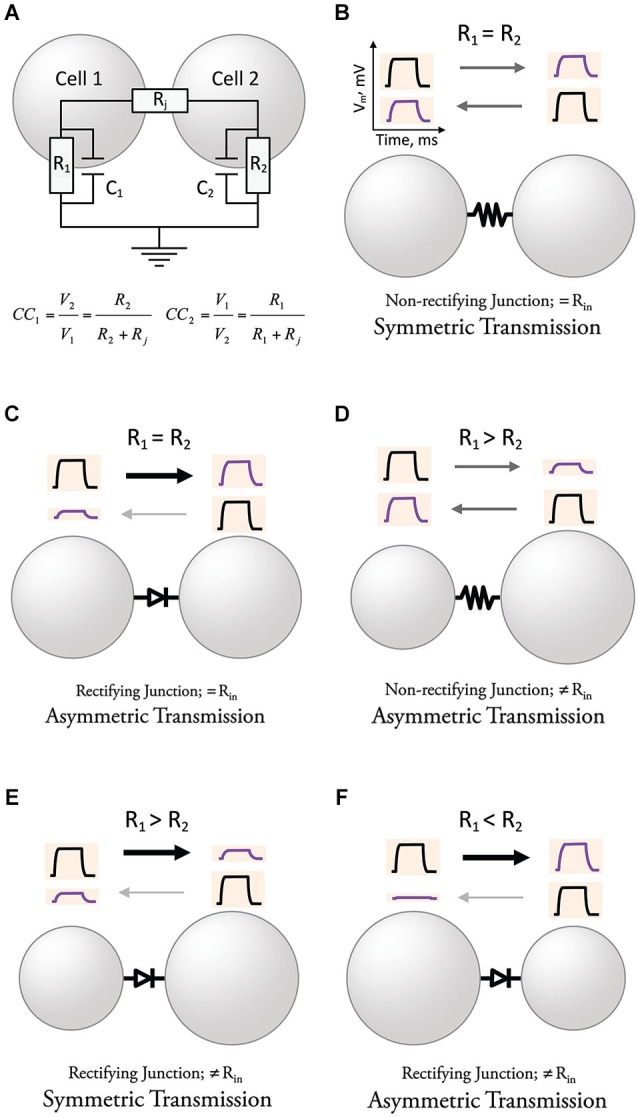Figure 2.

Directionality and symmetry in electrical transmission. (A) Determinants of the strength of electrical transmission. The amplitude of the coupling potential, defined by the coupling coefficients in each direction (CC1 & CC2), once the capacitance of the membrane has been charged, is determined by both the resistance of the junction (Rj) and the resistances of the coupled cells (R1 & R2). (B) Electrical transmission is symmetric in cells with similar R and non-rectifying junctions (constant Rj). (C) Rectifying junctions make electrical transmission between neurons with similar R asymmetric. (D) Cells with different R create asymmetry of electrical transmission when junctions are non-rectifying. (E) Electrical transmission could be symmetric in cells with different R and rectifying junctions if the effects cancel each other. (F) The combination of differences in R and rectifying junctions can create strong asymmetry of electrical transmission for some polarities.
